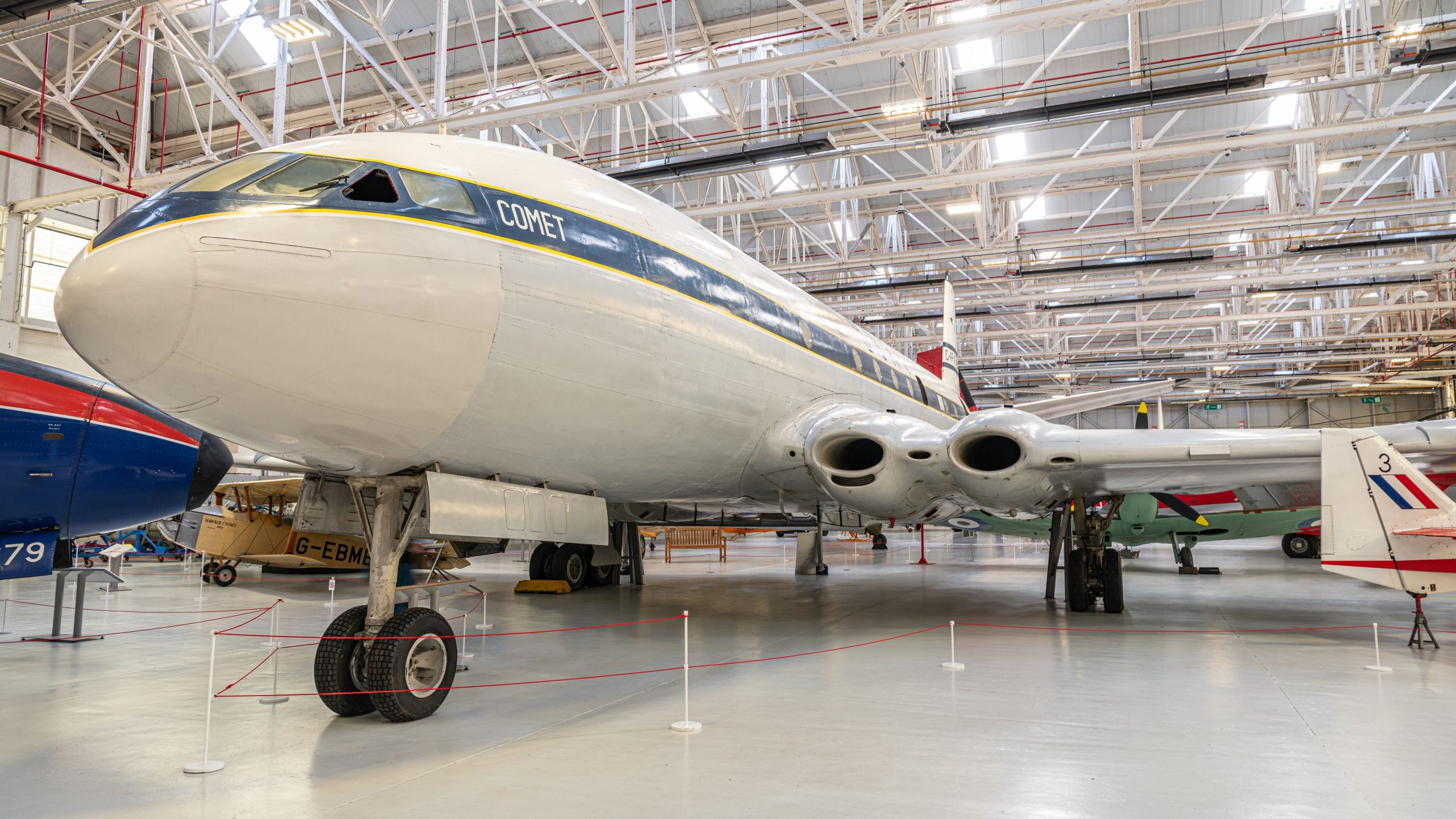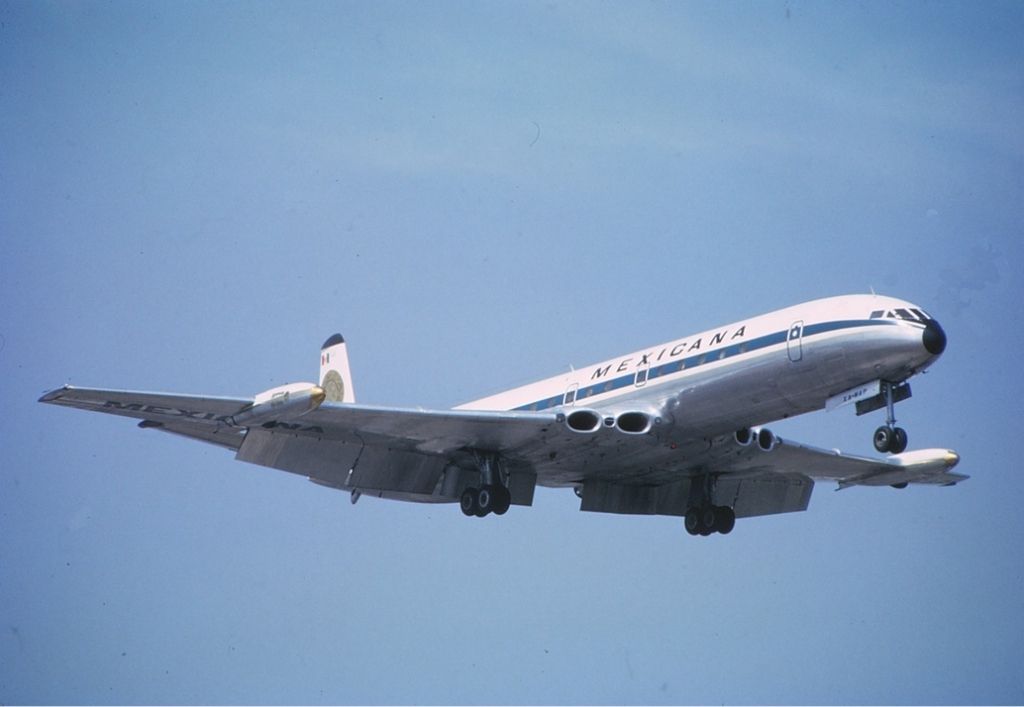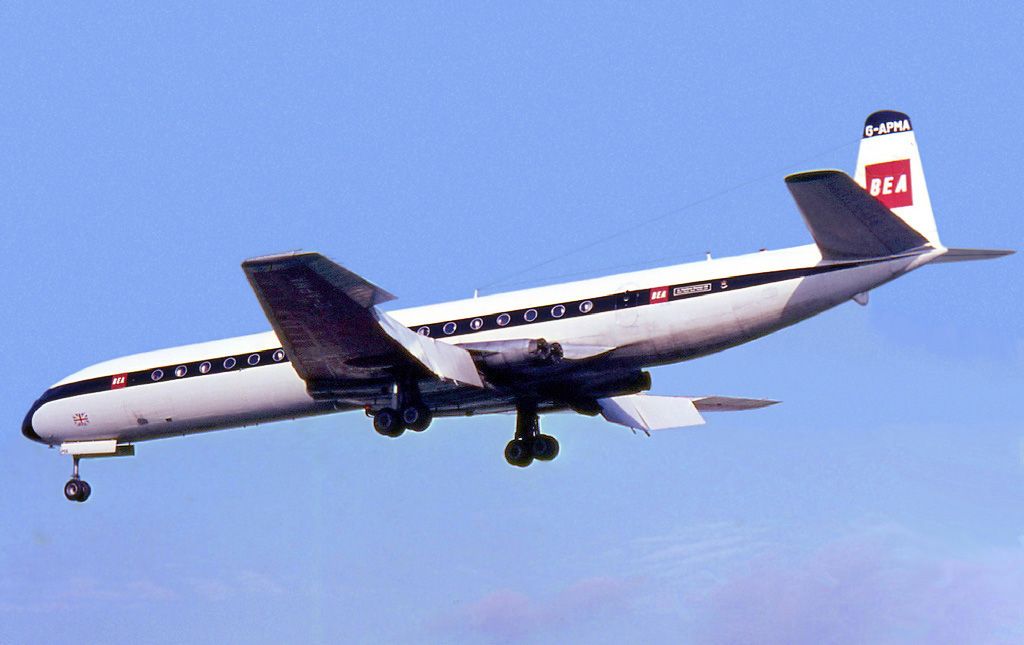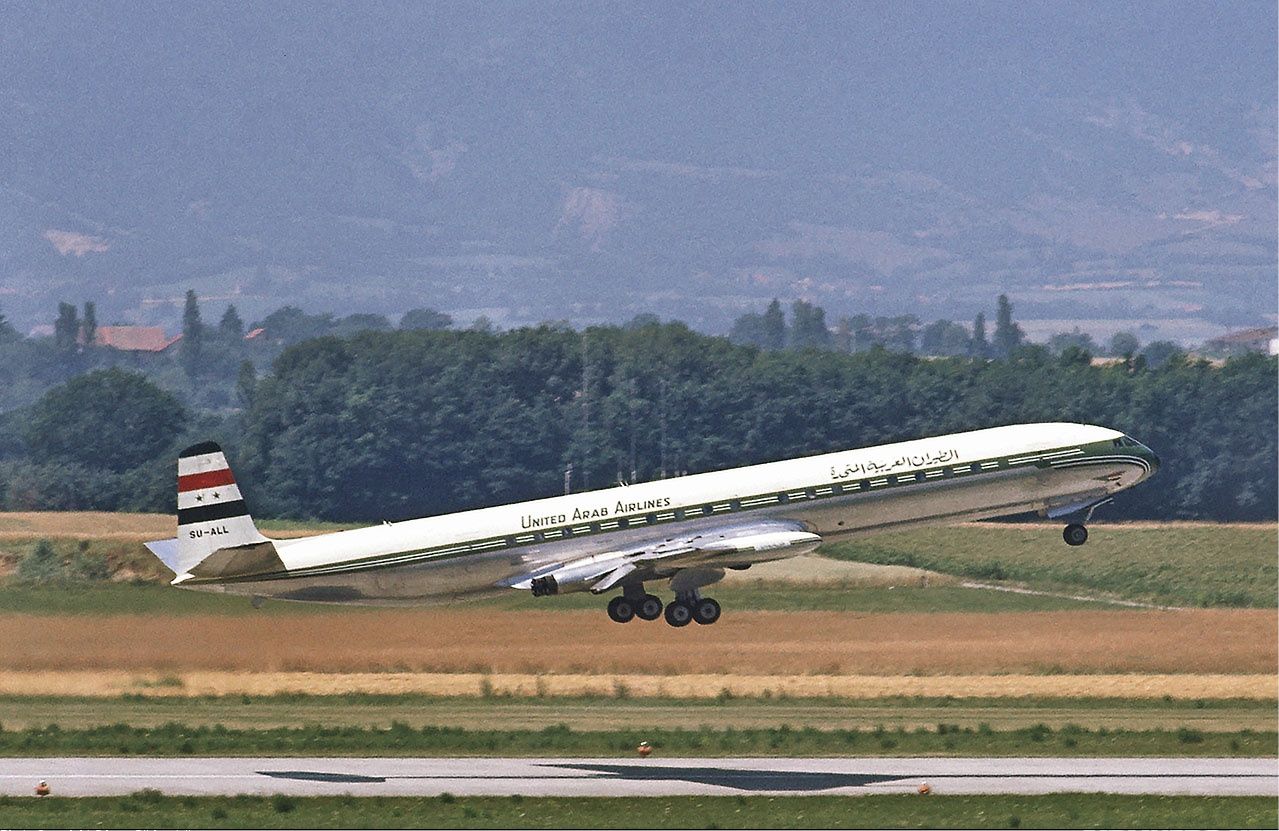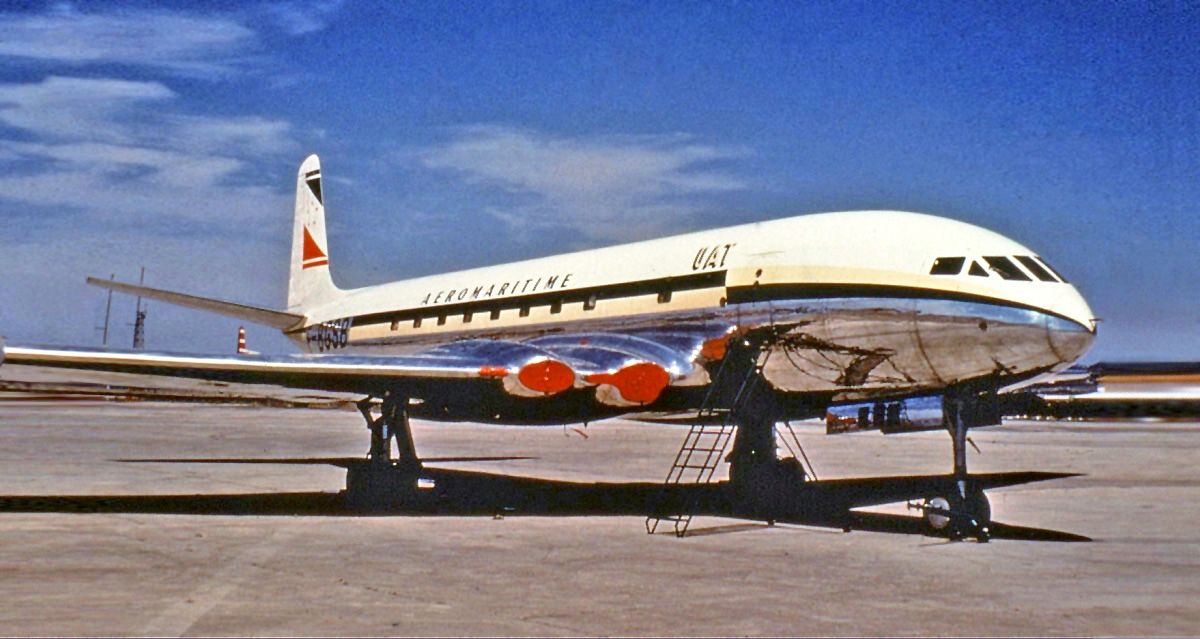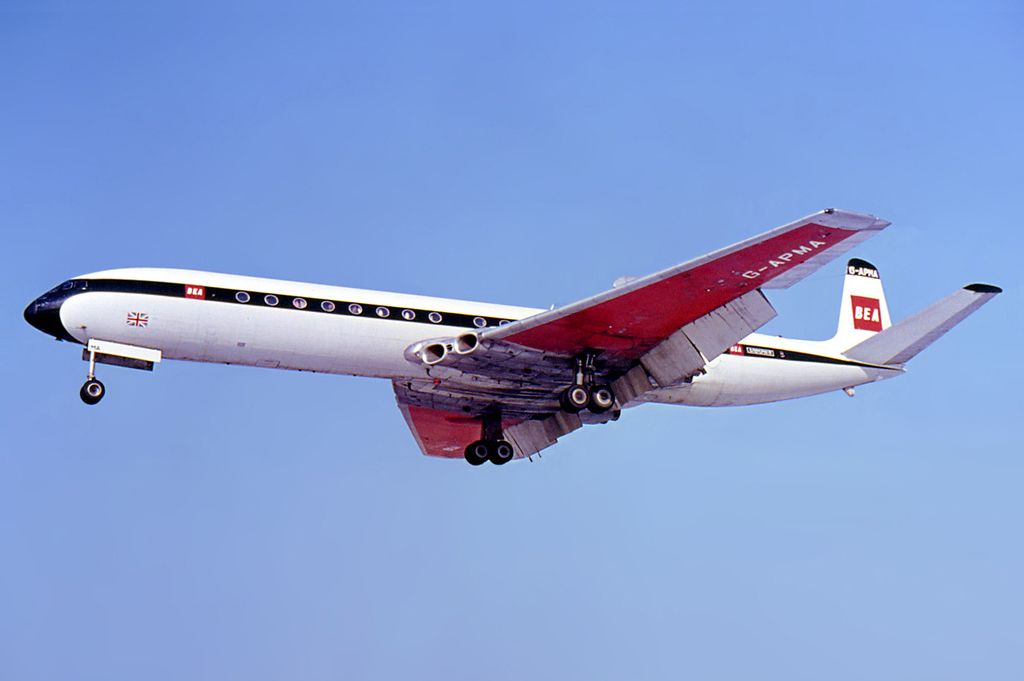Summary
- The De Havilland Comet revolutionized the aviation market by being the first jet-powered airplane to operate commercially scheduled passenger services, but it was plagued with structural problems that led to accidents and a four-year grounding.
- The Comet offered undeniable benefits, including being 50% faster than its piston counterparts and providing a luxurious and comfortable travel experience for passengers, with features like reclining seats, large windows, and a bar.
- Despite its early success, the Comet faced concerns and crashes that led to its decline, and it was ultimately overtaken by competitors like Boeing and McDonnell Douglas. Nonetheless, the Comet’s introduction marked the beginning of a new era in the aviation industry.
The De Havilland DH.106 Comet is an aircraft model that revolutionized the whole aviation market and brought a new age in the industry. The Comet was the first jet-powered design to reach the airlines’ fleets and operate commercially scheduled passenger services. Nonetheless, its glamour was also met with longstanding issues that led to 25 hull-loss accidents and a four-year parking of the entire program due to structural problems.
New requirements for a new era
The Brabazon Committee was formed in 1943, which had the task of determining the United Kingdom’s aviation needs after the end of the Second World War. The group felt that the country needed a pressurized transatlantic mail plane. The desire was to transport 2,200 lb of payload at a cruising speed of 400 mph.
Famed designer Geoffrey de Havilland answered the call. He created the Comet, a risky idea that included jet engines, which were seen as more reliable than the large-piston radial engines, powering other aircraft, such as the rival Lockheed Constellation. At the time, it was believed that jet engines consumed too much fuel and were unreliable. Jets were deployed in World War II but were yet to be entered into passenger service.
Overall, Sir Geoffrey de Havilland used his experience and reputation to get the project off the ground. Thus, the first commercial jet airliner in the world took to the skies for the first time on July 27th, 1949, which was also Sir Geoffrey’s 67th birthday. Moreover, chief test pilot John Cunningham was also celebrating his birthday that day.
Undeniable benefits
There were several perks to be had with the aircraft. The Comet was approximately 50% quicker than its piston counterparts at the time, bringing the world closer than ever before. Flights between London and Tokyo now lasted only 36 hours (versus 86 hours previously). There were other advantages across the board.
BAE System explained,
“The DH106 Comet was only 93 feet in length, almost 15 feet shorter than its main competitor the Douglas DC6B. It carried fewer people, although this was in a significantly more spacious environment, and BOAC opted to install 36 reclining ‘slumber-seats’ with 45-inch (1,100 mm) centers, thus allowing for greater leg room in front and behind. Air France chose 11 rows of seats with four seats to a row installed.”
BAE Systems also notes that the Comet was notably quiet compared to other aircraft on the scene. The plane offered “vibration-free flying” due to the difference a jet engine would make compared to a propeller vehicle.
Overall, the Comet brought a new era of luxury. BOAC configured the plane with large windows and a table seating, giving a feeling of comfort and luxury, which was highly unusual for a passenger air travel of the period. Other luxuries included a galley, serving hot and cold food and drinks, plus a bar and even separate men’s and women’s toilets. The cabin also provided space for emergencies, including life rafts stored in the wings near the engines and individual life jackets stowed under each seat.
All this luxurious design prompted the celebrities of the era to travel onboard the comet. For instance, Queen Elizabeth, the Queen Mother, and Princess Margaret were among a few of the first passengers to board the new plane.
Initial success
Over 30,000 passengers were transported onboard the Comet in the first year of operations. At least eight flights with the aircraft took off from London weekly, reaching destinations far away, such as Colombo, Johannesburg, Singapore, and Tokyo.
Throughout its history (before and after the four-year grounding), the Comet was used by airlines such as BOAC, Air France, East African Airways, Olympic Airways, Mexicana de Aviación, Middle East Airlines, Qantas, and more.
The concerns begin
Despite the revolutionary achievements, the plane’s early operations didn’t go so smoothly. There was a series of crashes that resulted in the aircraft being grounded multiple times in the mid-1950s.
The issues with the aircraft became a concern across the UK. Even Winston Churchill, the prime minister at the time, expressed that finding a solution to the mystery of the accidents was a high priority. Overall, the world had its eyes on the British aviation industry.
Despite the extensive testing, which saw a Comet being repeatedly submerged underwater, and the improved construction that followed, the Comet 1 and its successors, the Comet 2 and 3, would not serve another passenger. The Comet 4 would see some success with a handful of airlines, but by this time, the rest of the industry caught up with the jet trend.
In total, including prototypes, 114 units of the type were built between 1949 and 1964. The plane had swiftly been overtaken by competitors in the passenger realm. However, it wasn’t until 1997 that it was finally retired for the last time. This final aircraft was the Royal Air Force’s Comet 4C XS235.
The legacy goes on
Altogether, the de Havilland Comet was the aircraft that kicked off a new era in the industry. The jet age has brought countless new opportunities within the travel industry. The increase in speed and lower costs that came with the jet enabled the wider society to hit the skies for the very first time. This age may have lasted until now, but following Comet’s introduction, it was a genuine craze around the world.
The likes of Boeing and Douglas soon introduced their own here with the 707 and DC-8, respectively. These American manufacturers became powerhouses in the field in subsequent decades. Meanwhile, the Comet never managed to make a comeback following the series of tragedies that occurred following its entry into service.
The damage was simply done, and others filled in the gap. Nonetheless, the initial breakthrough of the Comet and should not be forgotten. Perhaps it was just introduced slightly too early for the industry. Regardless, it was the jetliner that started it all.
What do you think the legacy of the De Havilland Comet is? Let us know in the comments below.

